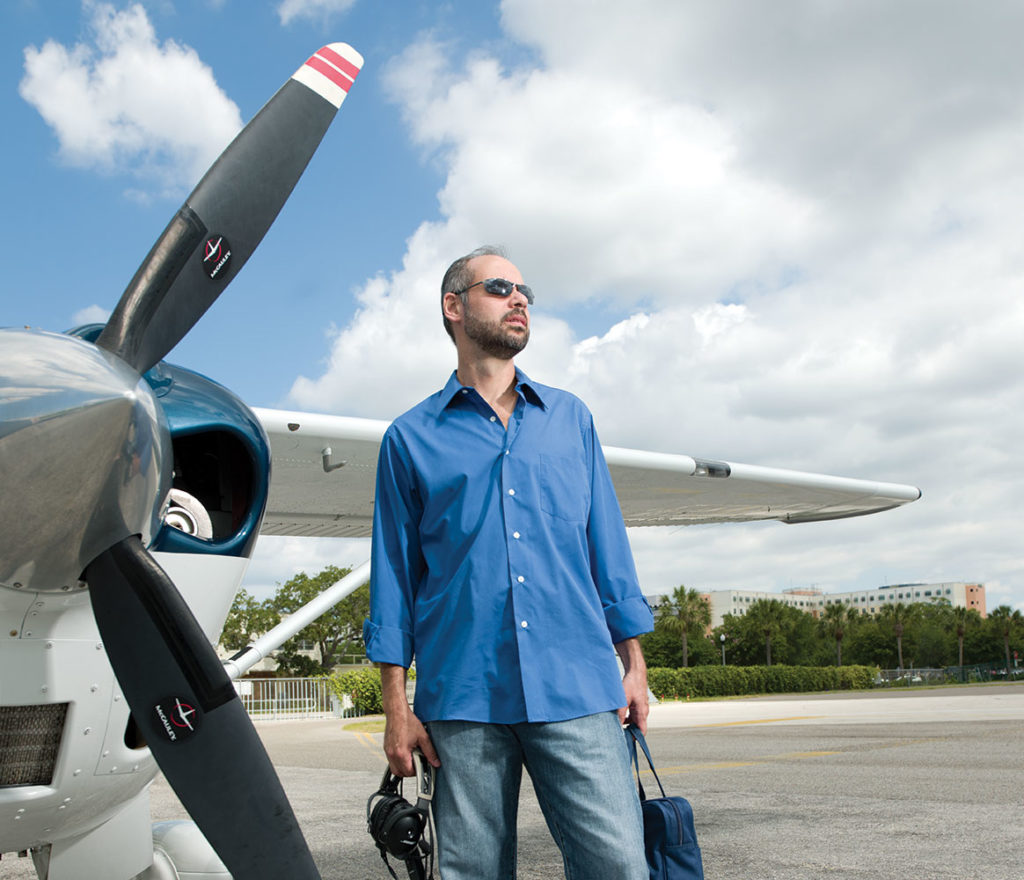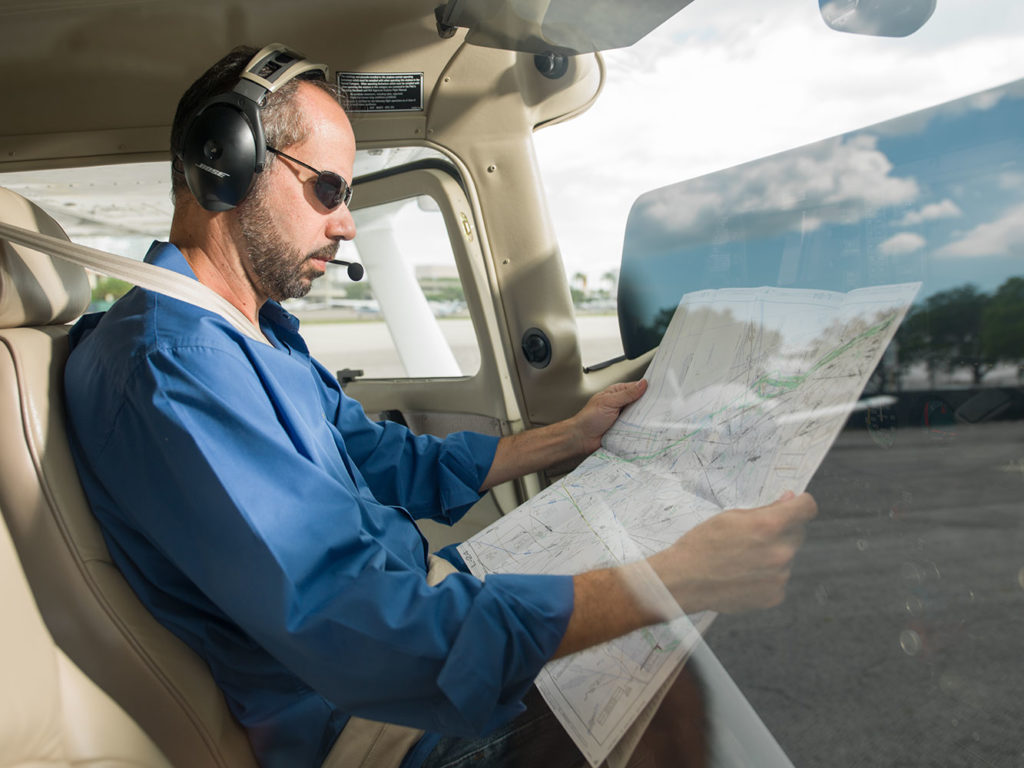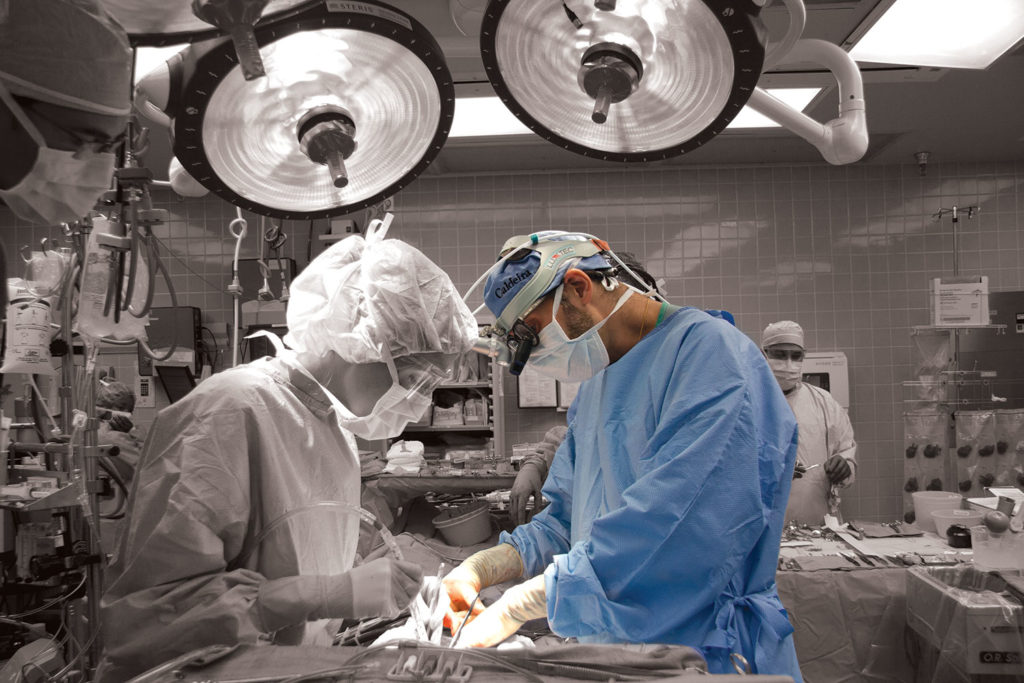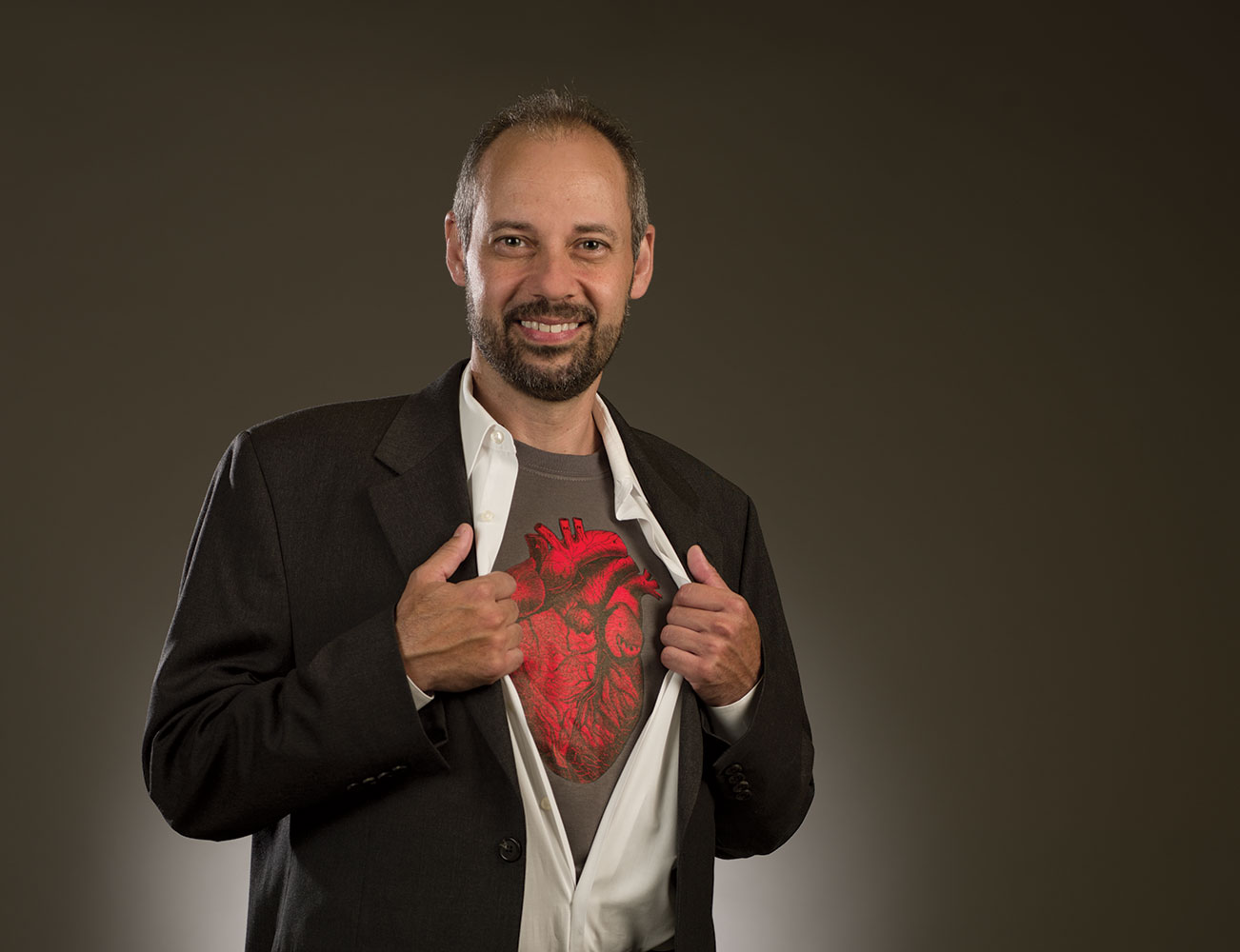“What’s your favorite story you’ve ever written?”
I’ve been asked that question several times over the course of my career, and up until 2011 I would say a feature I wrote on an artist that’s keeping the Fiji Mermaid myth alive (seriously, check out Juan Cabana at www.thefeejeemermaid.com). But two years ago, I met with Dr. Christiano Caldeira at Tampa General Hospital to discuss a profile on his life as a heart surgeon. Dr. Caldeira offered to give me a behind-the-scenes look at his hectic life, where any given night he might be called upon to administer a heart transplant. For our weekly feature flashback series, I’ve revisited my interview with Dr. Caldeira. Read the full story below.
Eric Smithers, Managing Editor. (Originally posted in 2011. Updated July 20, 2018).
A Humble Heart
Cardiovascular surgeon Dr. Christiano Caldeira is a modern-day superhero in the operating room.
At 6:30pm on a Wednesday, Dr. Christiano Caldeira gets a call from LifeLink. A 20-something-year-old car accident victim was pronounced brain dead and her heart matches a recipient on Tampa General Hospital’s donor list. Dr. Caldeira’s shift is almost over. It has been a normal day at Florida Advanced Cardiothoracic Surgery center (FACT), located within TGH. But when you’re a cardiothoracic surgeon on call for donor heart procurement, normal days are few and far between.
He punches out at around 8:30pm and rushes to his home off Bayshore Boulevard in South Tampa to spend a few hours with his two kids before they go to bed. All the while, the undisclosed hospital is prepping the young woman for surgery. At 11:30pm, the local organ procurement organization, LifeLink, calls him again. The heart will be ready at 4:30am.
That’s when the journey starts.
The helicopter churns to a start and the rotor chugs viciously above our heads as we sit buckled inside, ready to take off.
**************
In another life, Dr. Caldeira may have been our pilot for the evening. Before deciding to become a doctor, he dreamed of spending his life in the cockpit of a fighter plane. When the Air Force denied his admission due to a failed eye exam, he was forced to pursue a different course.

It’s plain to see why he chose cardiology. Heart surgeons are like superheroes in the operating room. Every doctor saves lives, but heart surgeons literally give life. Dr. Caldeira has a humble heart but it’s easy to see why he gravitated toward this specialty, even though not a single member of his family works in the medical world. He decided to apply for medical school after meeting the family of a former girlfriend. They lived good lives, made good money and had great stories to tell.
“I got into med school and in my first semester I had anatomy and I loved it,” he says. “Physiology, cardiology; it was beautiful and I fell in love with it.”
Just one semester in and he made up his mind: he was going to be a heart surgeon. He left Brazil and several years later completed his fellowship in lung transplantation, heart transplantation and ventricular assist devices at the Cleveland Clinic Foundation.
In Cleveland, he met Dr. Cedric Sheffield and Dr. Cristiano Faber, two men who would later ask him to move to Tampa in 2005 and help establish a heart and lung transplant department at TGH. Since arriving in Tampa, he has executed close to 200 transplants, averaging 30-35 operations each year.
“My life story is always about being prepared and at the head of the game, waiting for when the opportunity comes knocking at my door,” Dr. Caldeira says.
Since 2005, TGH has been ranked the fifth busiest heart transplant program in the country. His staff also has one of the highest survival rates and is in the top 10 for volume of transplants.
As a teenager, Dr. Caldeira was a “wild kid” who spent his days skateboarding through the rural streets of Brazil and “going out and doing crazy things.” It’s his perseverance, not his book smarts, that have helped him become such a recognized surgeon in Florida, he says.
“I graduated very high in med school because when I put something in my mind, I’m going to do it. And I haven’t failed yet,” he says. “And that’s including FACTS.”
Dr. Caldeira founded Florida Advanced Cardiothoracic Surgery (FACT Surgery) in Oct. 2006. FACT Surgery deals with any surgery needed in the chest. The private surgery center is where he handles primarily heart and lung failure, providing an extensive range of cardiothoracic surgical procedures such as coronary artery bypass grafting and implantation of ventricular assist devices. To date, FACT Surgery has performed more than 800 coronary artery bypass procedures.

When he’s not in the operating room, you can usually find Dr. Caldeira hanging out with his kids or in a private jet flying to exotic foreign locations. A year after arriving at Tampa General, he took the tests needed for a pilots license. He’ll forever wonder what it’s like to pull three G’s, but Dr. Caldeira seems just as content playing a modern-day superhero in the operating room.
**********************
The moon is not quite full and only the brightest stars are visible. It’s a brisk morning on Davis Islands with the occasional ocean breeze tearing at the palm trees. It could very well be considered night; it’s hard to say when you’re shadowing surgeons.
Most transplants happen during the night and weekends, Dr. Caldeira says. He tries to plan his day when he’s on donor procurement duty but it’s nearly impossible.
This morning, he arrives at the hospital at around 4:35am. He’s running on an empty stomach, wearing sea foam green scrubs with a starch-white lab coat and a designer surgical cap embroidered with his name. A gold chain with a cross on the end dangles around his neck. He seems tired but extremely alert considering he’s only had three hours of rest.
“I’m so used to staying awake,” he says, “I only sleep two to three hours a night.”
He gives me a quick rundown of the current status: LifeLink called last night to identify the donor. They located the hospital, validated the match and got consent from the family to procure the organs. Several tests have already been administered to see if it’s a good heart. The results are based on size, weight, blood type and antibodies.
“We have to trick the body into not recognizing that the heart’s not yours,” Dr. Caldeira says.
By 4:45am we’re set to board the helicopter with his two assisting surgeons, but not before the doctor reviews the notes one more time.
We pierce the early morning fog and take off at 4:55am. Dr. Caldeira triple checks his notes and sends text messages back to the TGH surgeon who will be inserting the heart upon their arrival. Outside our window, the sand-colored moon illuminates the sky. While the city sleeps below, surgeons work to give life to someone they hardly know.
Not long after taking off we arrive on a hospital rooftop, where we rush into the operating room. Inside, a team of 10 doctors and nurses surround the young woman on the table. Heart surgeons are always the last to arrive and the first to leave. At four hours, the heart has the shortest survival time of all organs.
The next hour flies by. First, Dr. Caldeira checks the current standing of the heart. He then preps it by clearing surrounding tissue and fluids. By 5:35am, the main vents are exposed and the preservation bag is prepped. He takes a moment to text Dr. Cedric Sheffield back at TGH to let him know that everything is a go.
At 5:50am, they crossplant the aorta and use ice to stop the heart. At 5:55am the heart stops. Now starts the ischemic time, when a decrease in blood supply affects the survival time of the heart.

The surgeons pause to watch as Dr. Caldeira cuts out the heart. Four minutes later, it’s out of the body. The next few minutes are spent checking the weight and size of the organ, wrapping it—wrapping it again—in ice and plastic, and then sealing it off. By the time the cooler lid snaps shut, Dr. Caldeira has removed his surgery coat and he’s ready to go.
After a short helicopter ride back to Tampa General, he drops off the heart to Dr. Sheffield, who later performs another successful transplant. The morning rush has begun at the hospital, where those working the 7am shift are flooding through the garage and the hospital halls, greeting the doctor as he walks through.
The fog has settled on Davis Islands and the sun rises on the eastside of the hospital as Dr. Caldeira goes back to FACT Surgery and starts his day. Running on an empty stomach and hardly any rest, the energy beams behind his worn eyes. No food, no sleep still makes Doc a happy fellow.
“My mom always asks how I can do stand not eating or drinking or sleeping and I tell her it’s because I’m having so much fun,” he says with a laugh. “Time flies when you’re doing what you like and I’m too old already because I don’t see life passing by.”
Linking Lives
A local nonprofit organization helps save lives through transplants.
Twenty-six years ago, Tampa General Hospital was the first hospital in Florida to perform a successful heart transplant. The hospital’s organ procurement organization partner, the LifeLink Foundation, works closely with the United Network for Organ Sharing (UNOS) to monitor organs that become available on the southwest of Florida and help make these transplants possible.
LifeLink has a medical review board that presents patients to the hospital and places them on the UNOS list, prioritizing them based on how sick they are. The organization will try and place the organ locally, then reach out to the state and, if needed, nationwide for potential matches.
A person must be pronounced brain dead—meaning there is no blood flow to the brain and neurological activity has stopped—in order to be considered an organ donor. The family then has to give consent to LifeLink in order for the procurements to begin.
Each year, 2,000 people receive some kind of organ transplant. At press time, there were about 20 people on TGH’s organ donor list. Dr. Caldeira says the hospital has one of the shortest wait times in the country. “One donor can save seven lives,” he said.



